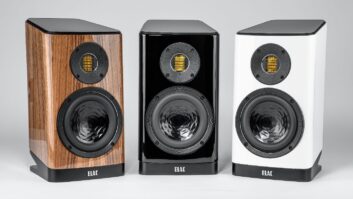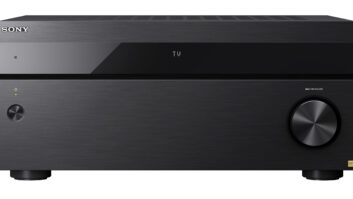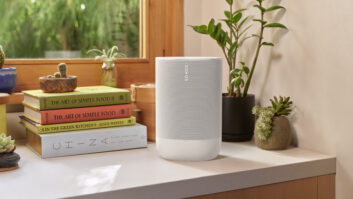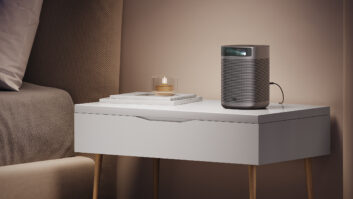This past week, a trio of luxury European manufacturers — Meridian Audio, Future Automation, Barco Residential, Display Technologies — invited a small group of dealers and reps from multiple states including California, Colorado, Texas, New York, Illinois, Washington, Georgia, and Florida to fly across the pond and visit their factories, meet with employees, and enjoy a bit of the local flair. They graciously invited me to tag along and I’ll be sharing my experiences and thoughts from the trip here.
Our first stop was Huntingdon in the United Kingdom where we visited Meridian, which I detailed in this post. Our second visit was to Future Automation, manufacturer of some of the most innovative and bespoke lifts and motorized solutions in the industry.
Besides an opportunity to get away from your business, tour a new area, and meet some of your factory contacts face-to-face and tour their facilities, one of the best features of trips like this is the relationships that it helps you to foster. Whether it is a conversation over dinner or drinks, or while walking through a factory, the ability to network with others who work with similar products can be invaluable. Ask anyone that has been in this business for any length of time, and they’ll tell you that some of the most important assets they cultivate are relationships; those between customers, reps, manufacturers, and even other dealers/integrators. These relationships — especially between those who serve similar clientele in non-competing markets — can be vital for solving issues and learning about new things that might improve your business.
These discussions were definitely things I definitely noticed while at Future Automation, as the dealers would discuss different applications and uses or come up with new installation ideas after seeing the breadth of what Future Automation was able to offer. One dealer had a true lightbulb moment as he discussed an issue with the Future Automation team and together they worked out a solution to an installation problem he had been fighting right on the spot.
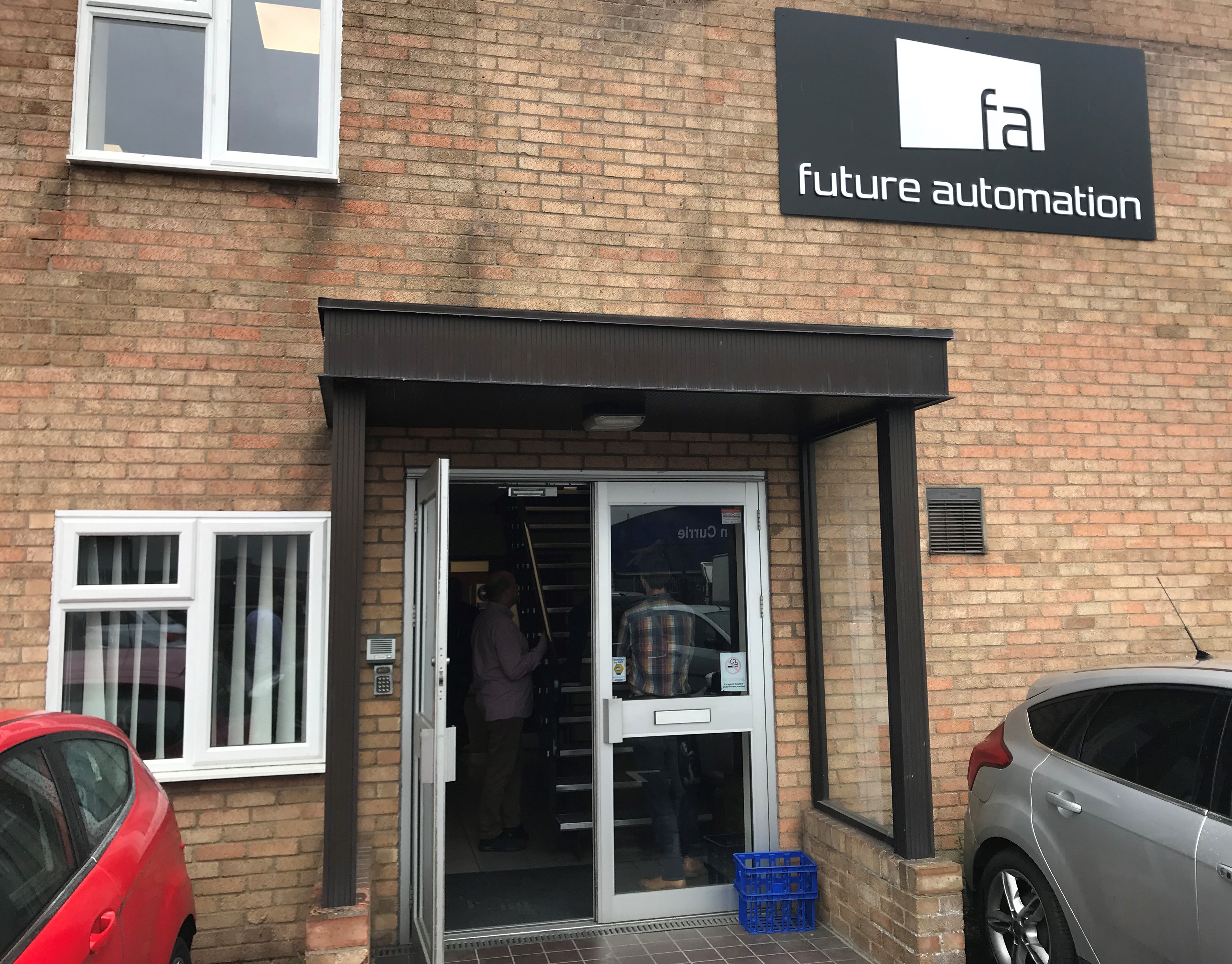
Located in the city of Bedford in England, about an hour drive south of Cambridge, is one of Future Automation’s five sites spanning across the U.S. and U.K. with approximately 90 total employees. While possibly a new name to some U.S. integrators, the company has been in business since 1998. While they would like to have all of the operations in one building, their growth has outpaced the ability to find a single space, so they split up between facilities, with the majority of fabrication, final assembly, and packaging done here.
The company says it isn’t looking to flood the market with dealers, rather it is looking for roughly 100 “really good integrators” so they are able to keep the product and dealer-base exclusive and protected. They also feel by focusing on their premier dealer channel they are able to access the top 1 percent of wealth in the world.
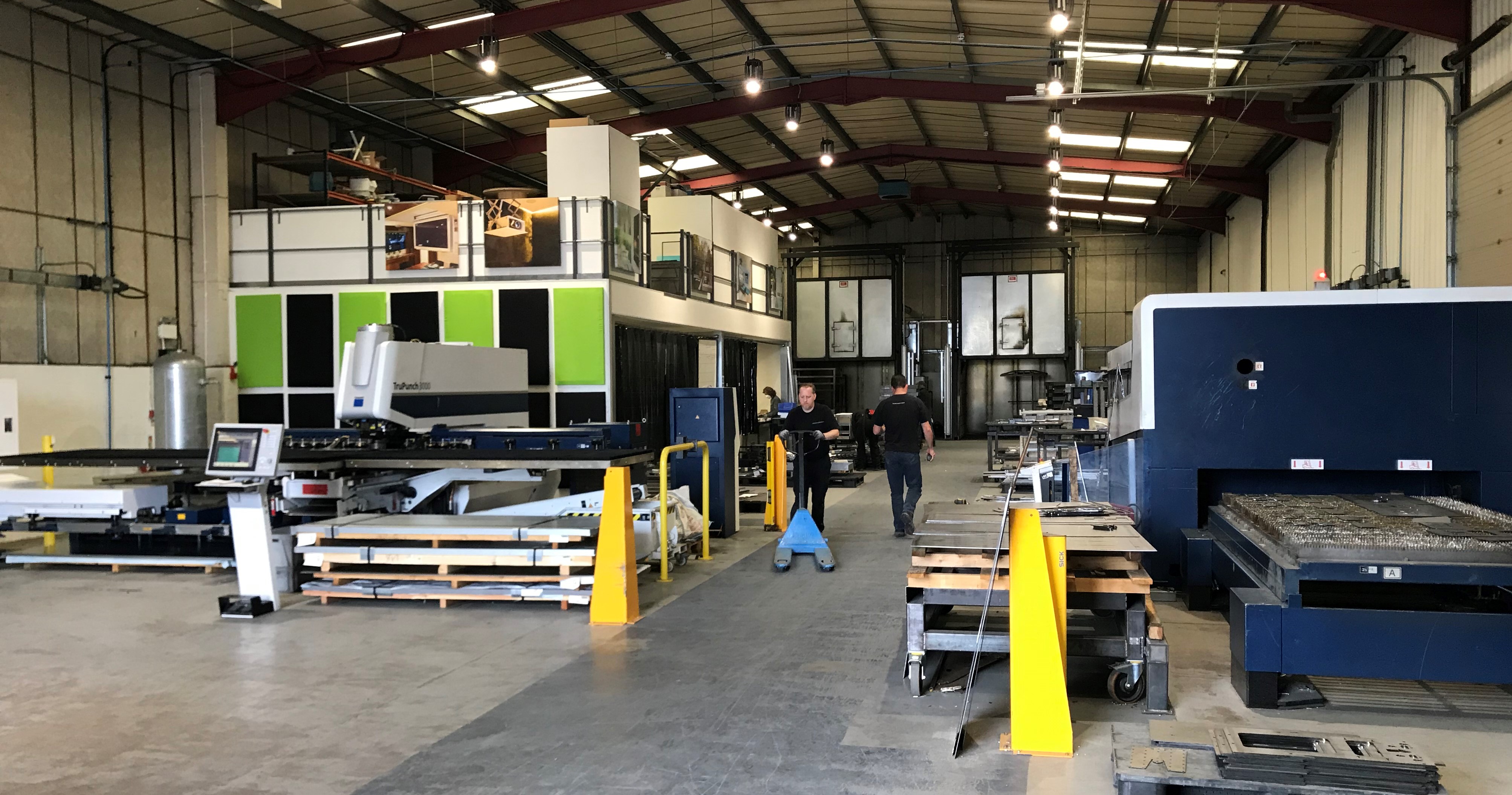
In 2018 the Bedford facility processed 71 tons of aluminum and 262 tons of steel to fabricate over 302,000 individual components for its mechanisms. Everything is done in house, and the company is very engineering based, with lengthy CAD drawings and schematics detailing each mechanism.
Here on the main floor, a variety of machines are used to perform a multitude of tasks from bending, punching, forming, and cutting steel, to painting and powder coating at the rear of the floor.
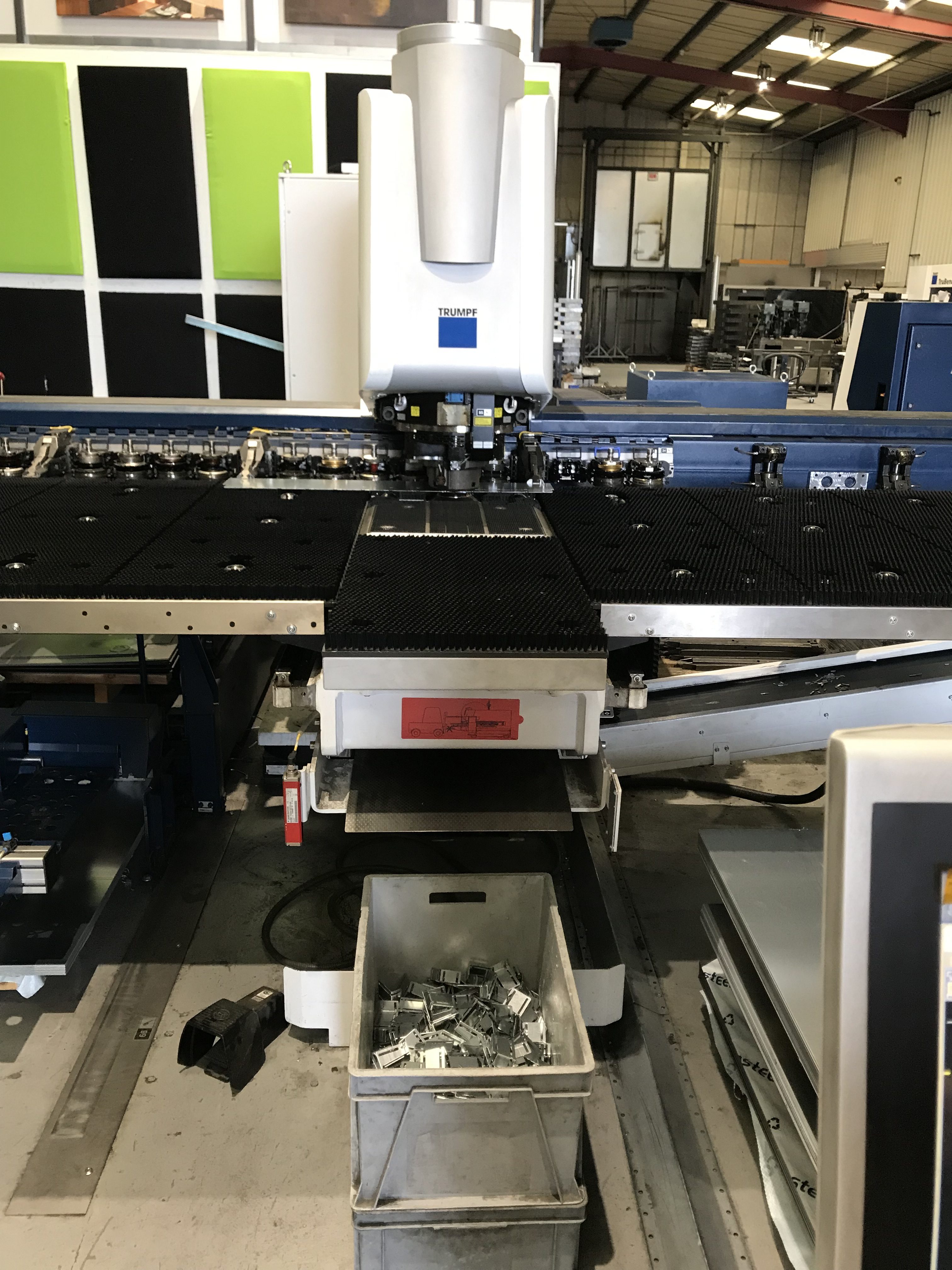
You don’t put much thought about the work that goes into all of the parts and pieces and manufacturing it takes to craft every bit of a mounting solution, but when you see and hear all the machines, punches, laser cutters, welders, metal folders, etc., you really get a sense of the work involved. This robot here, good o’le TruPunch 3000, was making U-brackets, taking them from a single flat sheet of steel, and then punching all the holes, bending them into U’s, and then breaking them loose where they land in the grey bucket ready to move on to the next station.
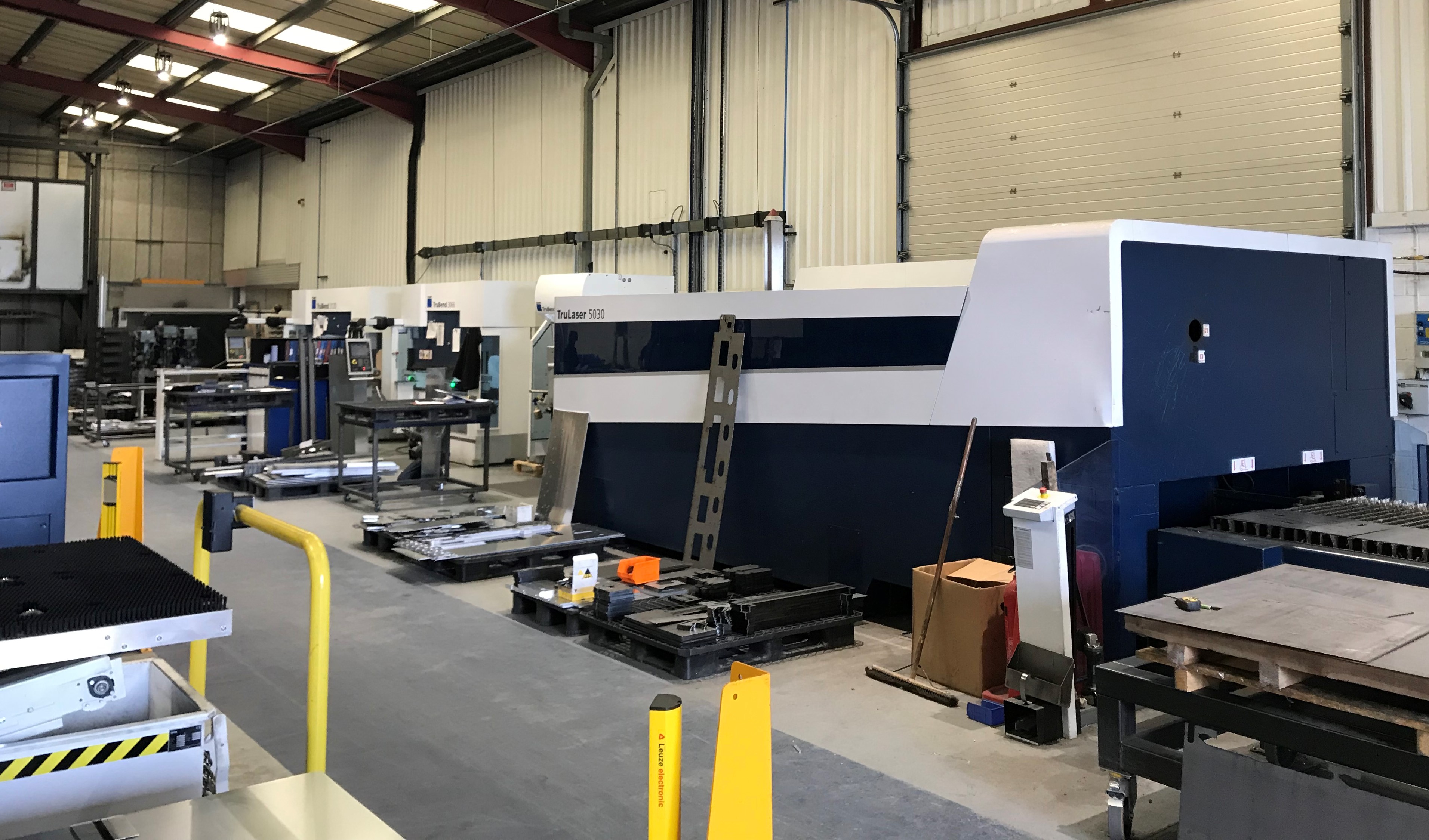
If you liked the TruPunch 3000, then you’ll love the TruLaser 5030. This machine cuts perfect holes in sheets of steel like a hot knife going through butter, but with no melting or other messes. The specifications are fed into the computer, and then TruLaser gets down to work, making perfect cuts in seconds. The power supply and cooling for this machine is massive, and is kept in a separate room.
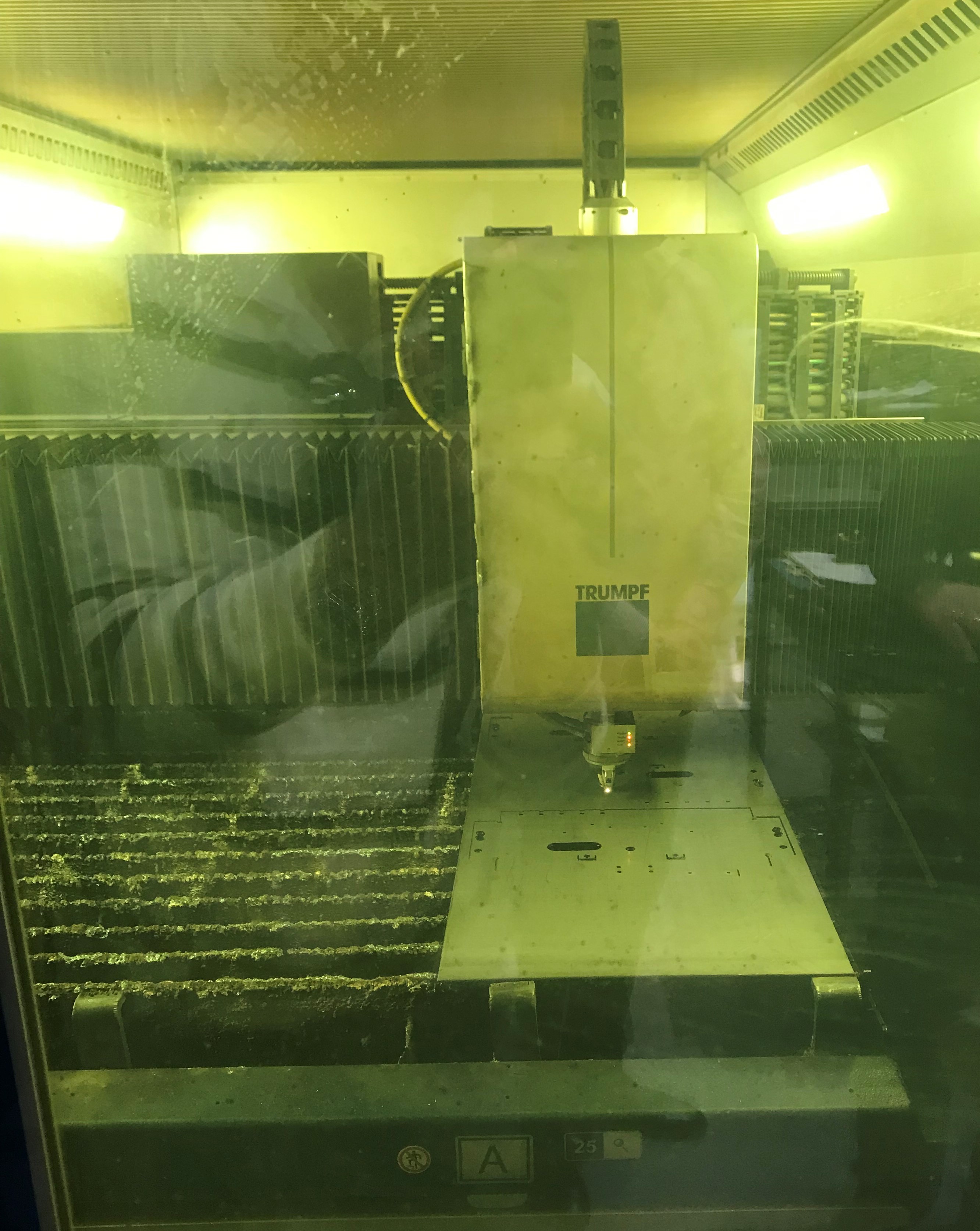
“Making Lasers Great Again” with this TRUMPF TruLaser machine. (Sorry, couldn’t resist.) Here you can see the holes being cut in the steel plate by the laser.
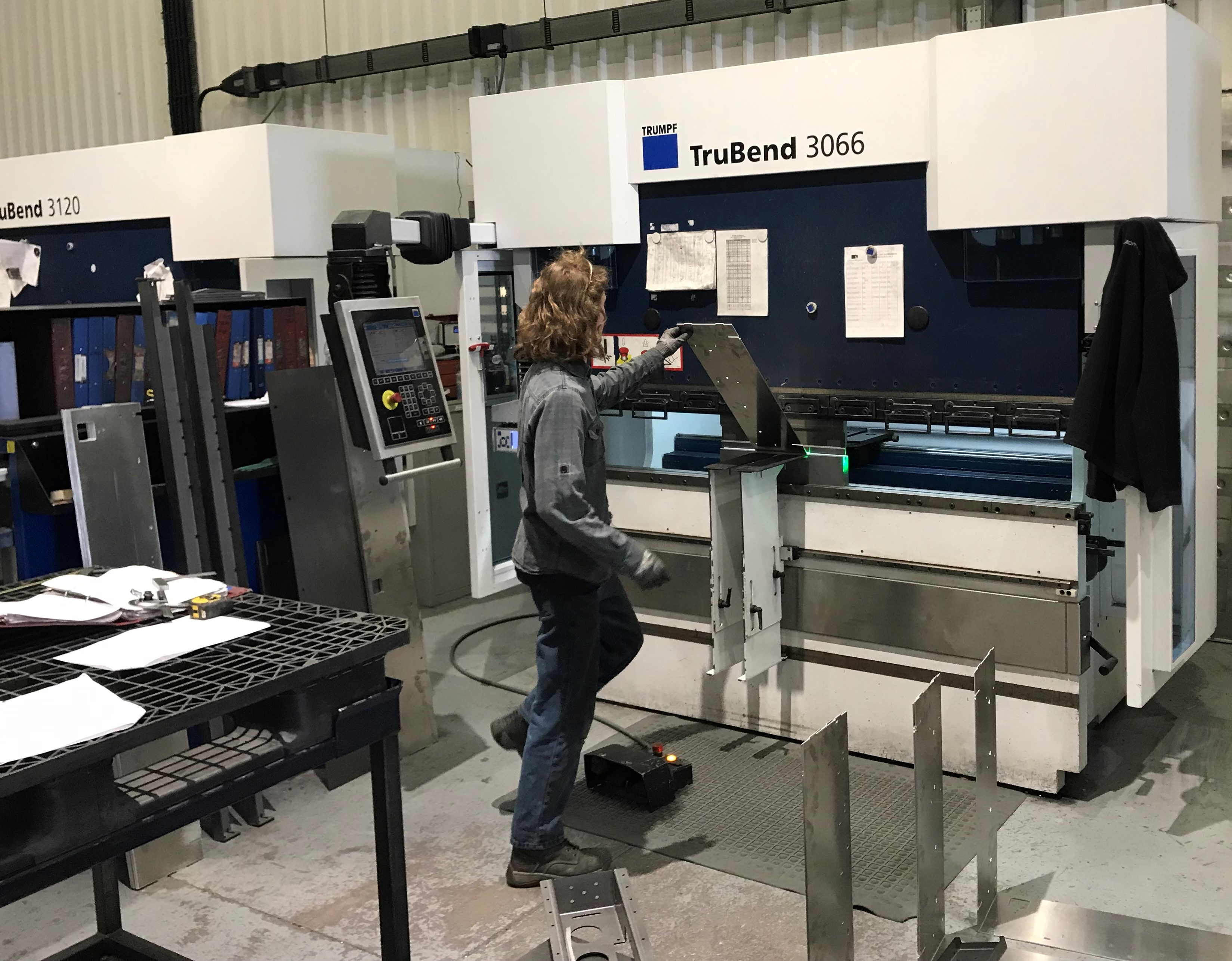
Here is the TruBend 3066, one of the company’s three bending machines. There are different machines used depending on the thickness of the steel needing bending with the 3066 being the smallest. (They say the largest bender is the most dangerous machine in the factory, with only a couple of employees certified to use it.) On the floor you can see the post-bended pieces standing in a perfect 90-degrees.
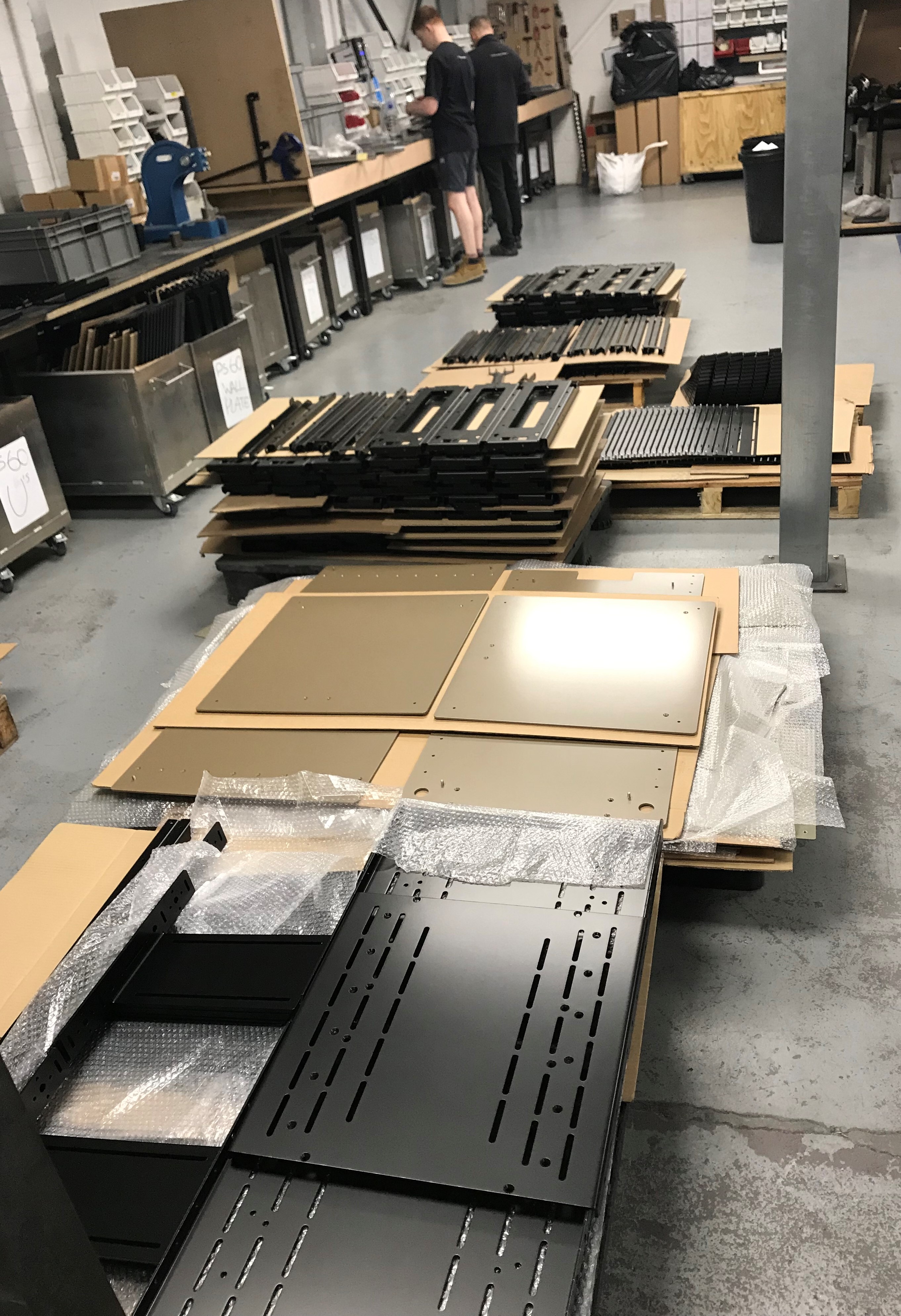
While the company was created on the idea of ultra-custom, truly one-off fabrications, they can design, fabricate and build just about anything and stressed they want to be involved in projects of all sizes, not just the big one-offs for which they are known. Future Automation offers 349 standard SKUs in its price sheet, and keeps inventory on hand to service these off-the-shelf, standard orders, with about 70-75 percent of jobs are off-the-shelf. The remainder of orders are a combination of those requiring slight customization and modification of an existing design to the full bespoke design and build.
Here, parts are laid out following powder coating or custom painting, ready to be assembled into finished kits prior to shipping.
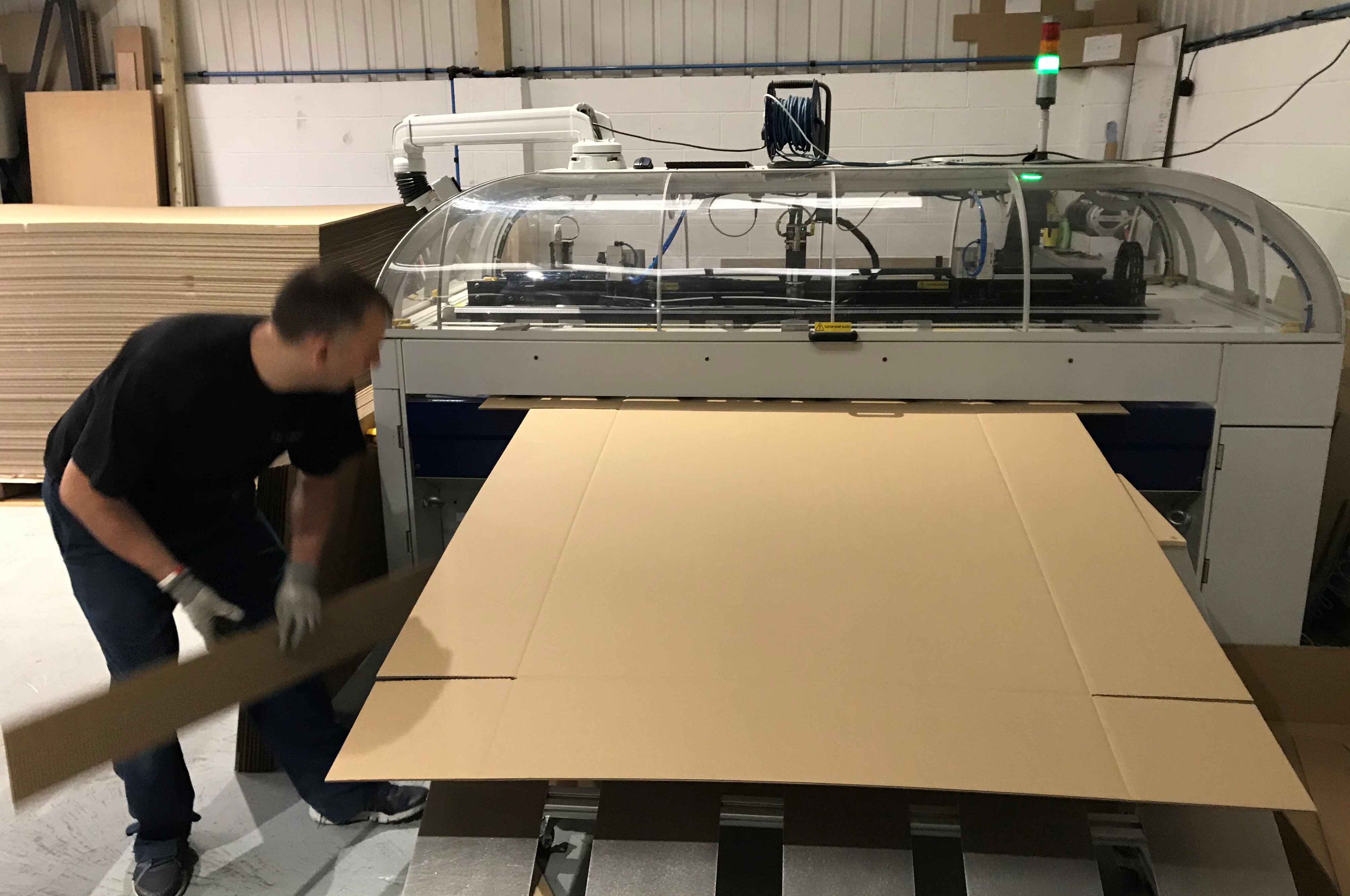
With such large and uniquely shaped mechanisms, the company was spending a ton on shipping charges. When shipping products by air internationally, you pay by cubic volume and they ended up paying a lot of charges for air volume. As a solution, they purchased a box making machine, and now make their own shipping boxes for each order. By building their own boxes specifically for their products, it saves money that can be passed on to the dealer, and also ensures absolute product safety during the journey.
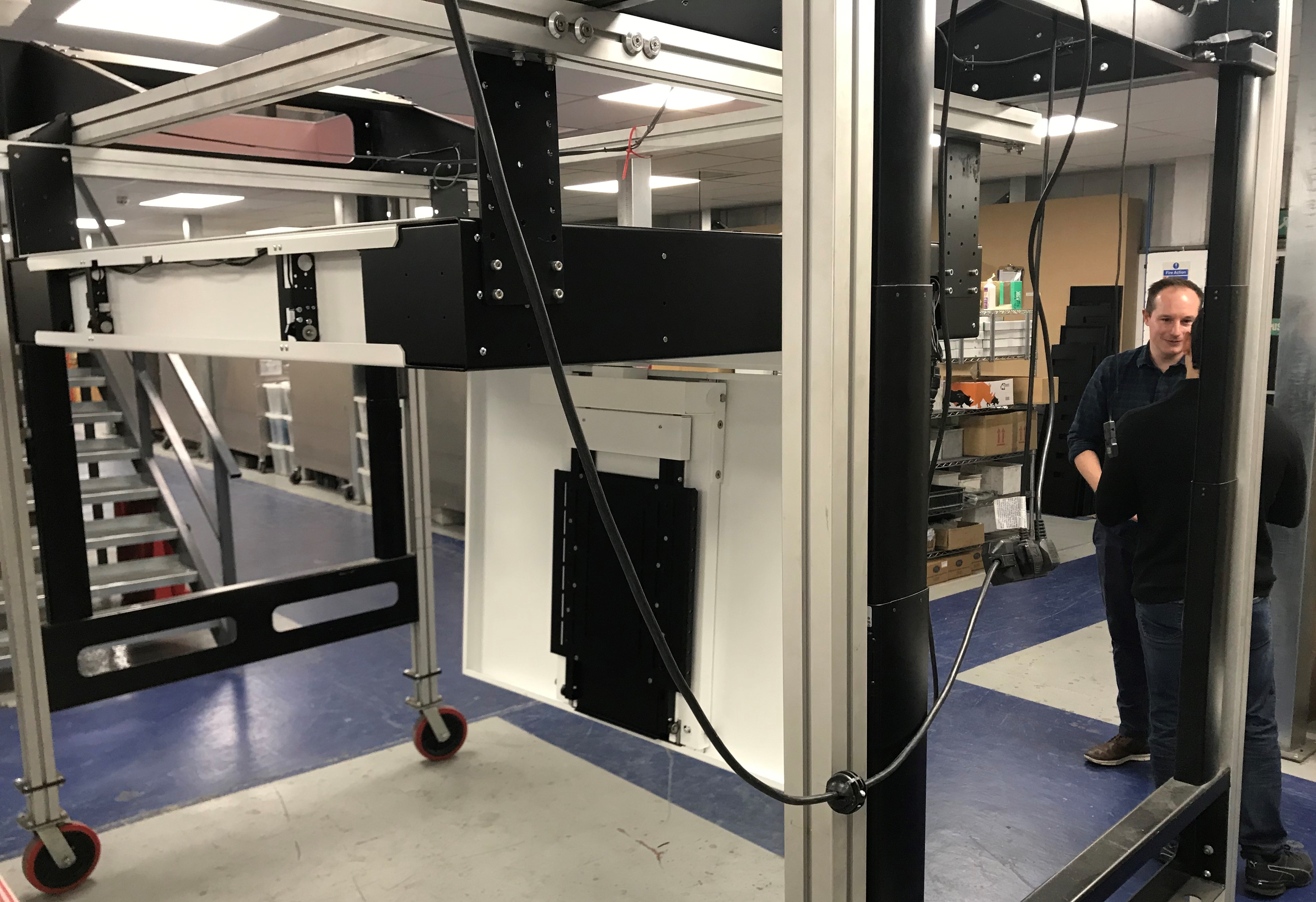
Here is a fully concealed, recessed TV mount that fits in as little as six inches of ceiling space. Why have an eyesore of a TV on the wall when it can be completely concealed until needed? Future Automation also fabricates lift mechanisms that can fit under a bed to slide out and reveal a TV at the foot of the bed, or others that can be placed below flooring. The company feels that new products like the Samsung Frame TV and LG roll-up are going to impact the future of the TV lift business and design, so they are constantly looking for ways to push their custom designs.
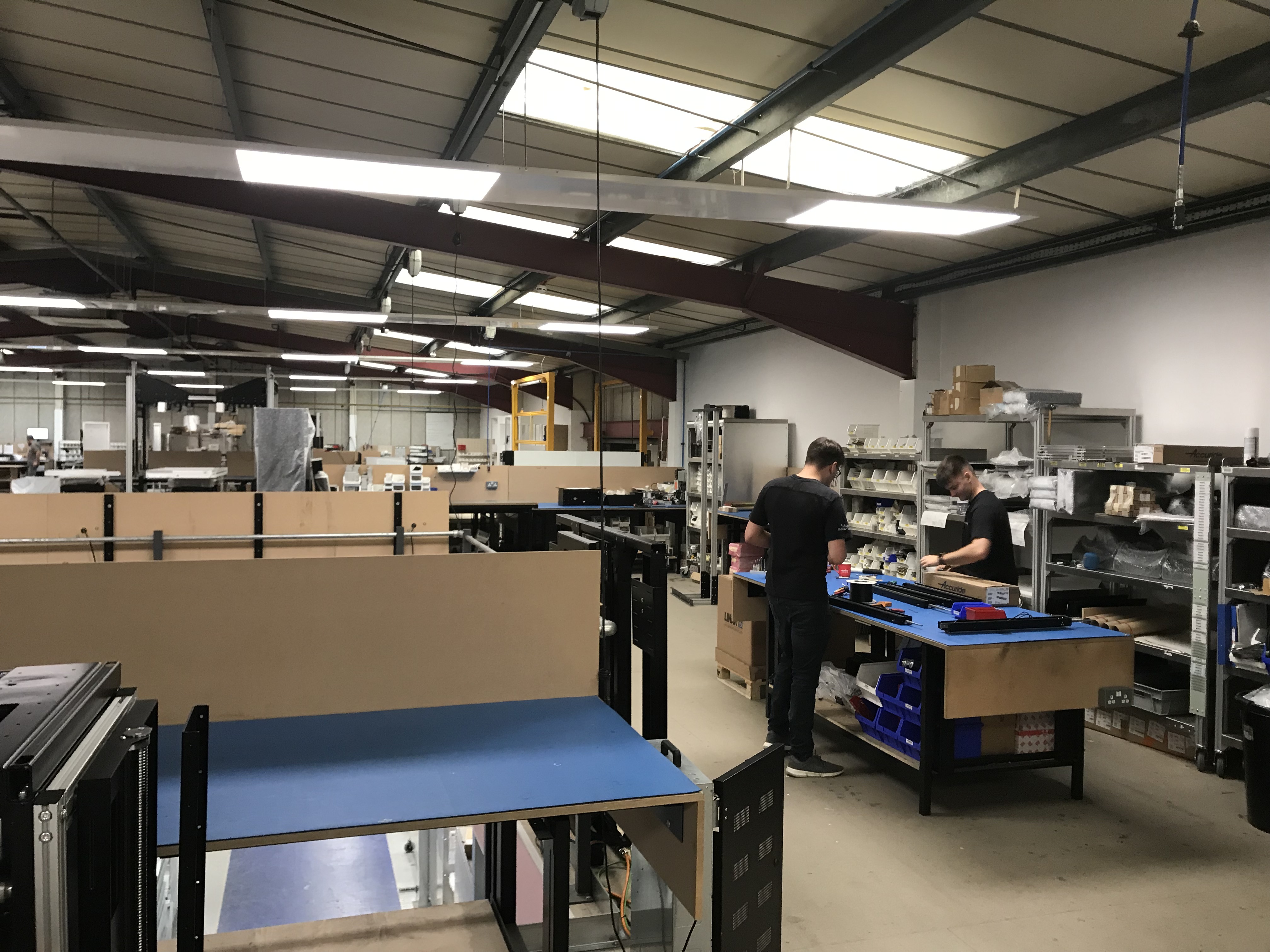
Every product is tested at the factory under actual load to guarantee that it will perform as promised when delivered. Further, each mechanism will have been handled, tested, and inspected by over 50 percent of the company staff before it is shipped. They are passionate about service and support; whatever it takes to make it right.
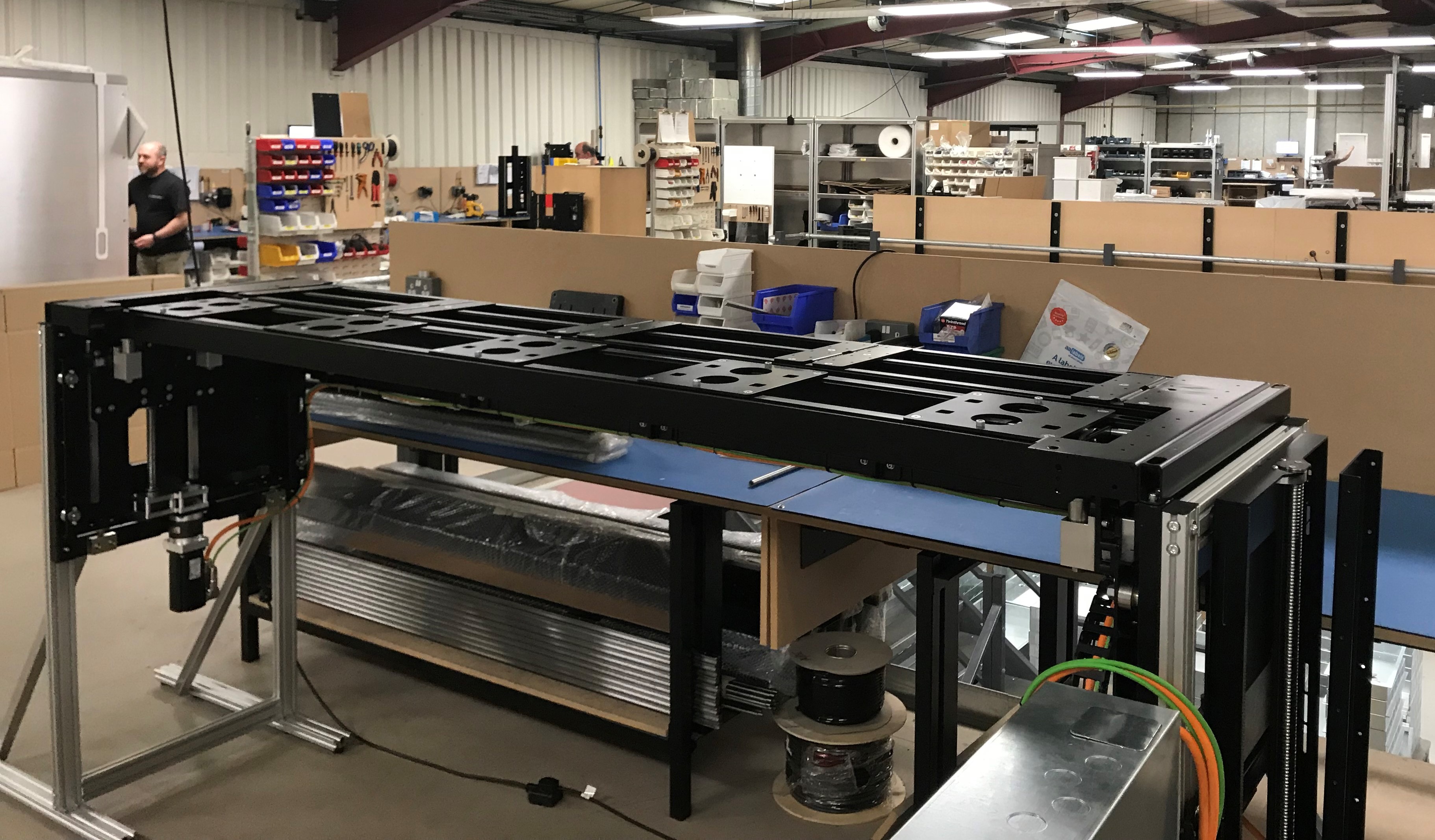
Future Automation’s products are not just for the high-end AV market; they also make designs to move furniture, appliances, art, safes, etc. The company also does quite a bit of business in the luxury yacht market where space and design are always at a premium. They also design and manufacture in-wall infrastructure solution products for wire management, and the company can design and build panels to your exact specifications and needs, potentially saving you loads of time in the field and making for a better/cleaner install.
Pictured here is a large servo motor lift system that is slated for a project in Russia. This will store a 150-inch Plasma TV underground, and be able to slide back a section of flooring to raise and deliver the TV into viewing position in a matter of seconds.
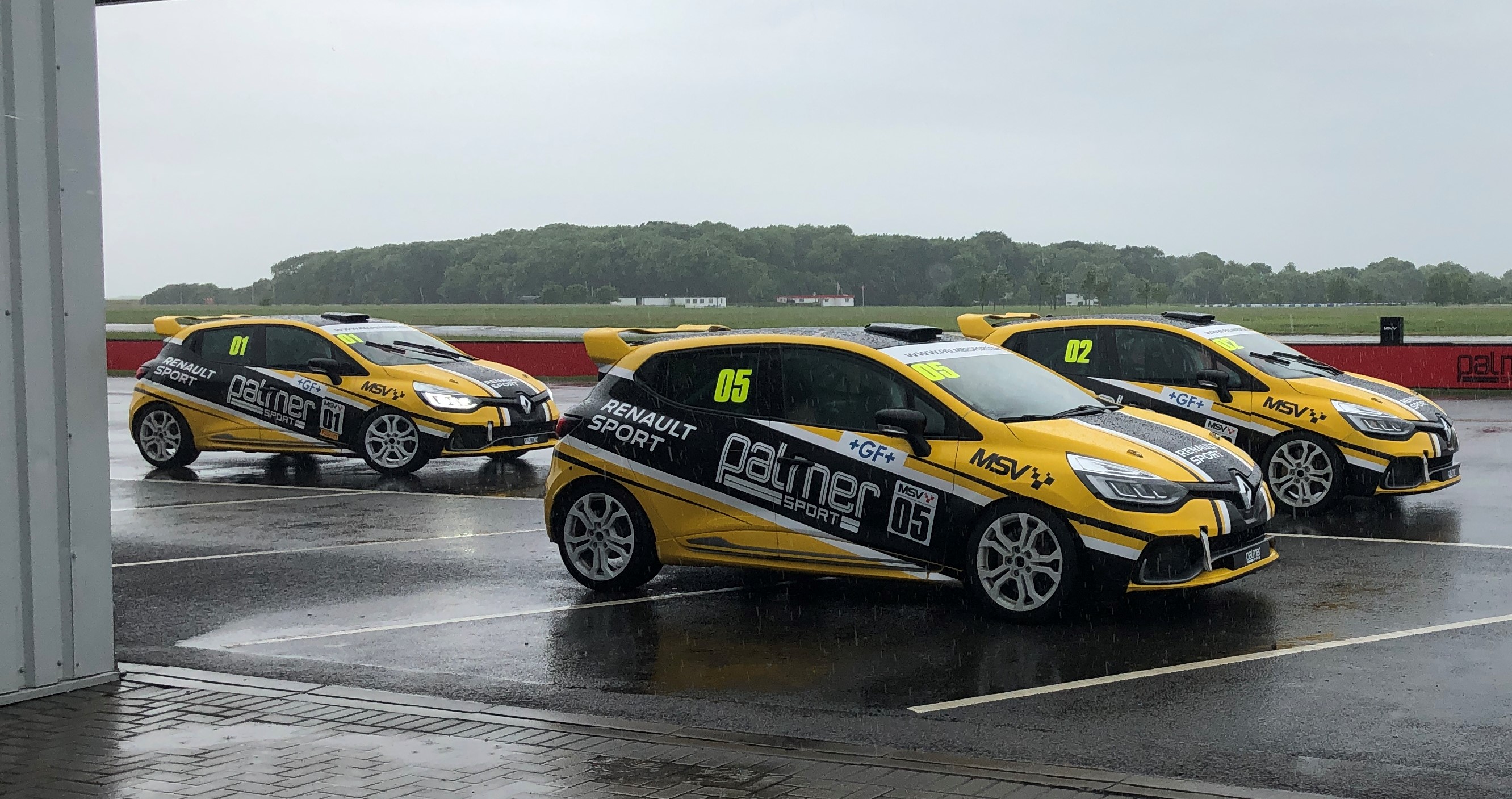
Following our morning at Future Automation, we headed out to the village of Thurleigh, Bedfordshire to visit the Bedford Autodrome and home of Palmer Sport. This is an area that traces its history back to WWII where it was used as a base for bomber aircraft, housing the 306th Bombardment Group. Laid out across many acres and out away from any other businesses, the Autodrome can handle several different track configurations and is designed to let you race all out with plenty of run-off areas to ensure safety. To get acclimated to the 1.87-mile west circuit, we started out in the Renault Clio Cup.

This little dynamo is known as the “Pocket Rocket” and can hit top speeds of 147 mph, with acceleration to 60 in 5.0 seconds. For speed, every comfort is ripped out from the inside of the vehicle, and it is fitted with a roll cage for safety. It also has a full racing steering wheel with computer, as well as a six-speed paddleshift transmission. A professional instructor accompanies you in the Clio, instructing you on how to enter and exit corners on the track, when to accelerate, up/down shift, and when to brake. You are encouraged to push yourself beyond your comfort zone, to really experience what the car is capable of doing. You wear a race helmet jacked into comms so you can hear his commands over the crash of gears and roar of the engine. In practice, what it sounded like was, “MORE POWER, MORE POWER, MORE POWER, OK, NOW FULL POWER! UP A GEAR, MORE POWER, MORE POWER…NOW BRAKE! BRAKE HARD!”
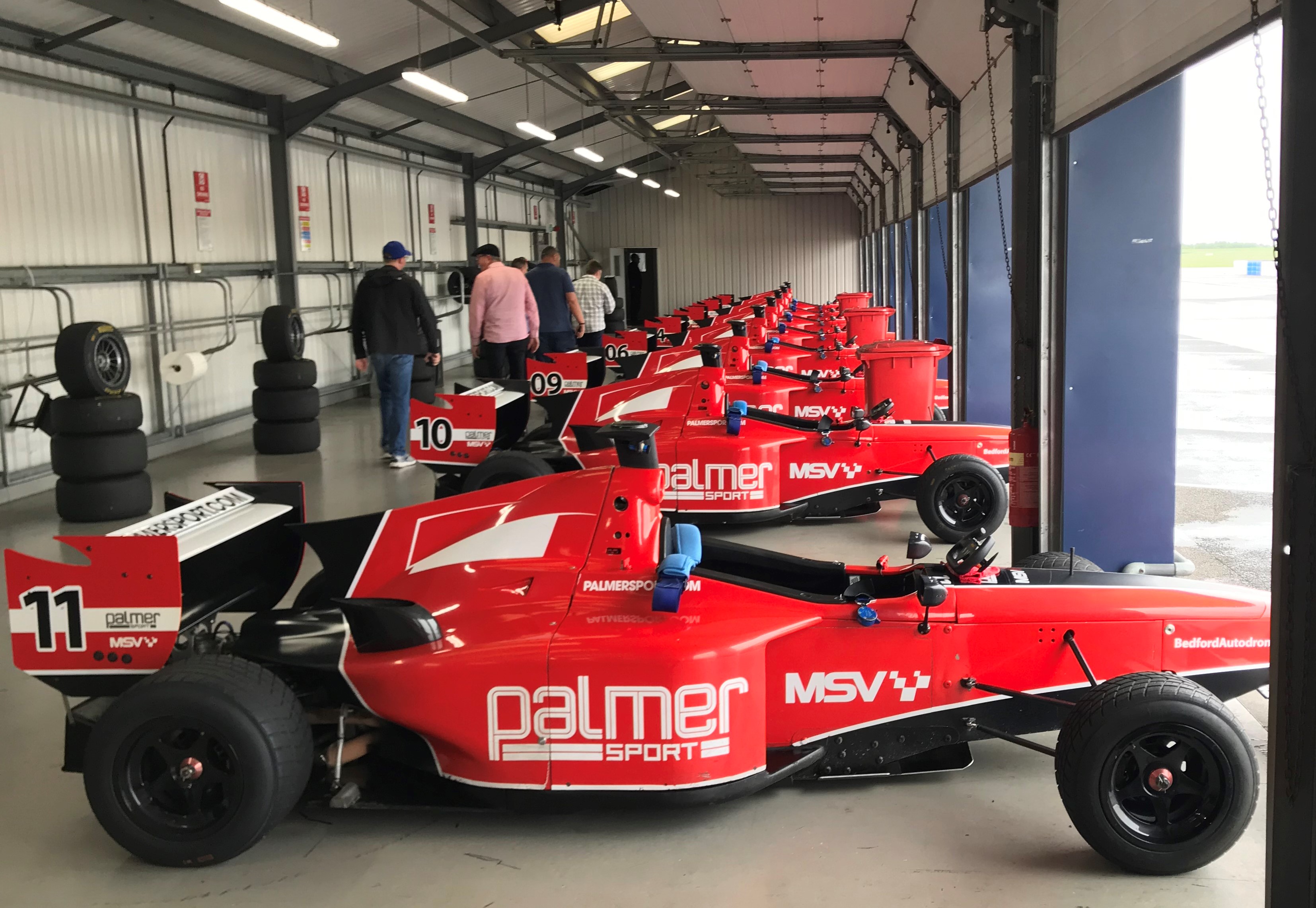
After our laps in the Clio, it was time for the main event: track time in a Formula 3000, open-wheel, single-seat, proper racecar. Just looking at these cars lined up filled you with a combination of excitement (51 percent) and fear (49 percent). This rear-wheel drive, mid-engine 3-litre V6 engine produces 250 bhp and is able to hit 170 mph and streak to 60 in 3.1 seconds.
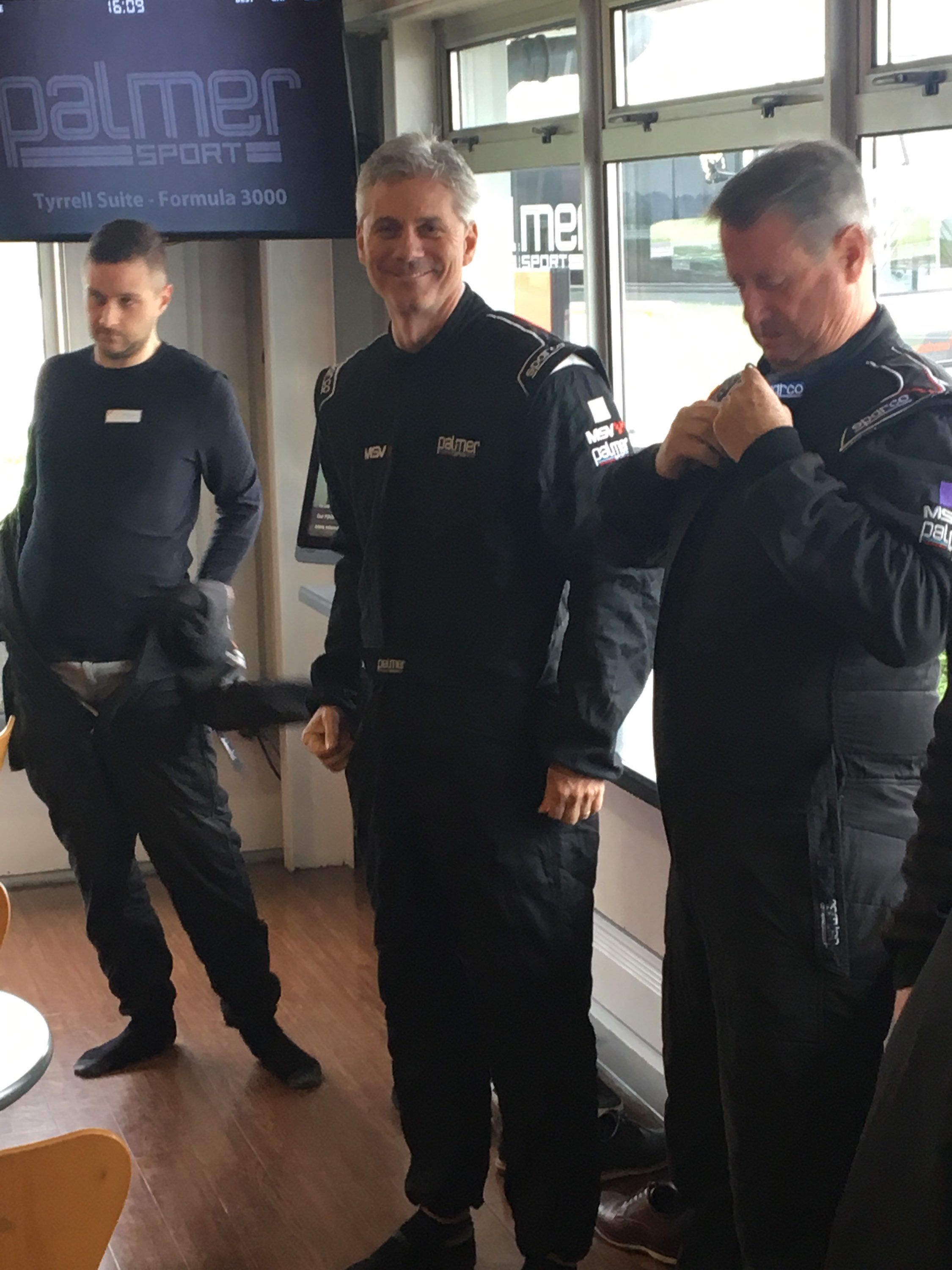
Before jumping into the cockpit, we were all fitted with proper race suits so we not looked the part but (somewhat more importantly) wouldn’t burn if our vehicle should wreck and catch fire. Getting your guests burned while across the pond for a visit is considered very poor form.
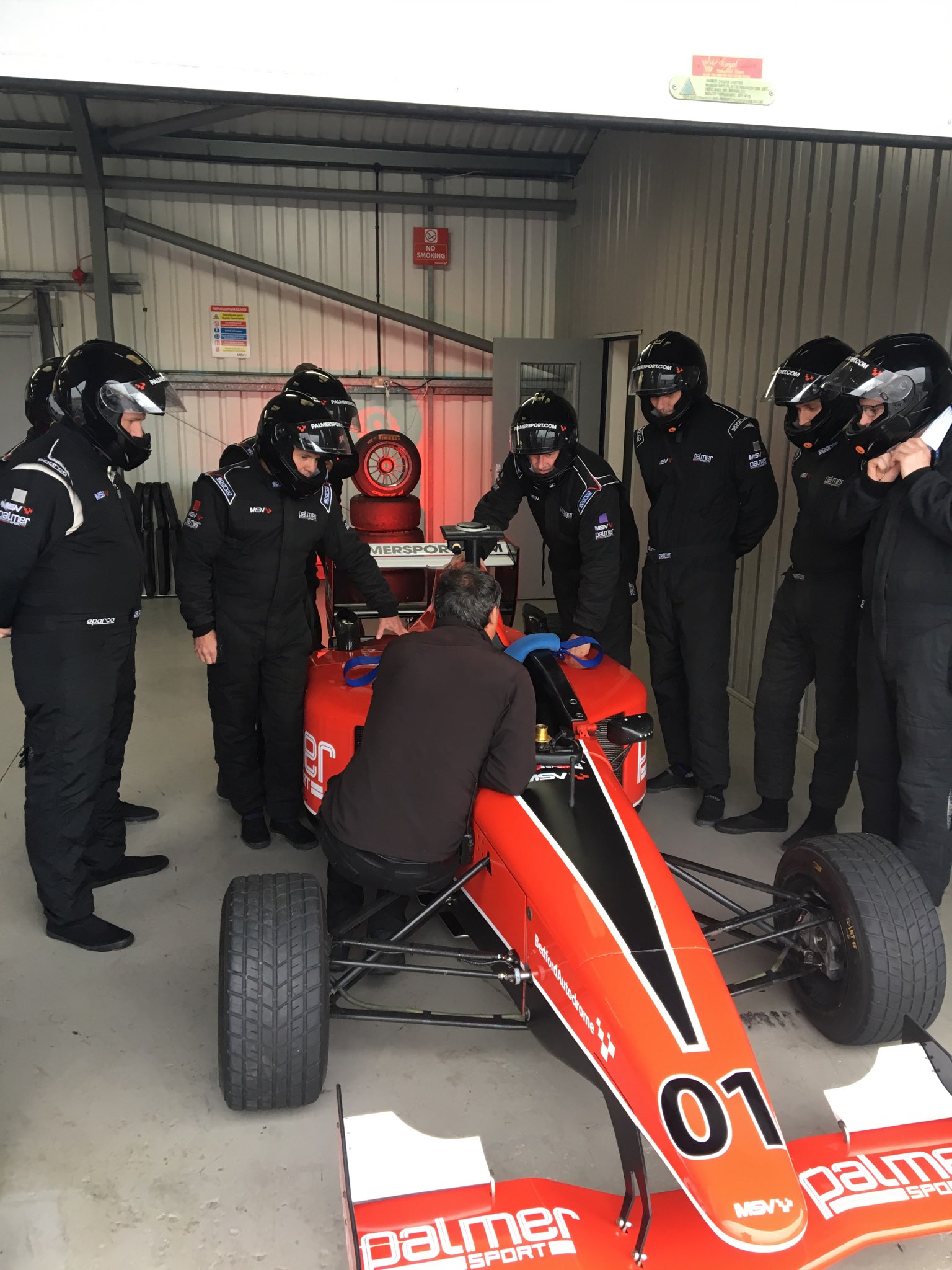
Here our group of racers is in full kit and getting the final go over before jumping into the car for a go. Typically, the cars are fitted with full race slick tires, but wet weather blew in so they changed all the cars to wets for better grip.
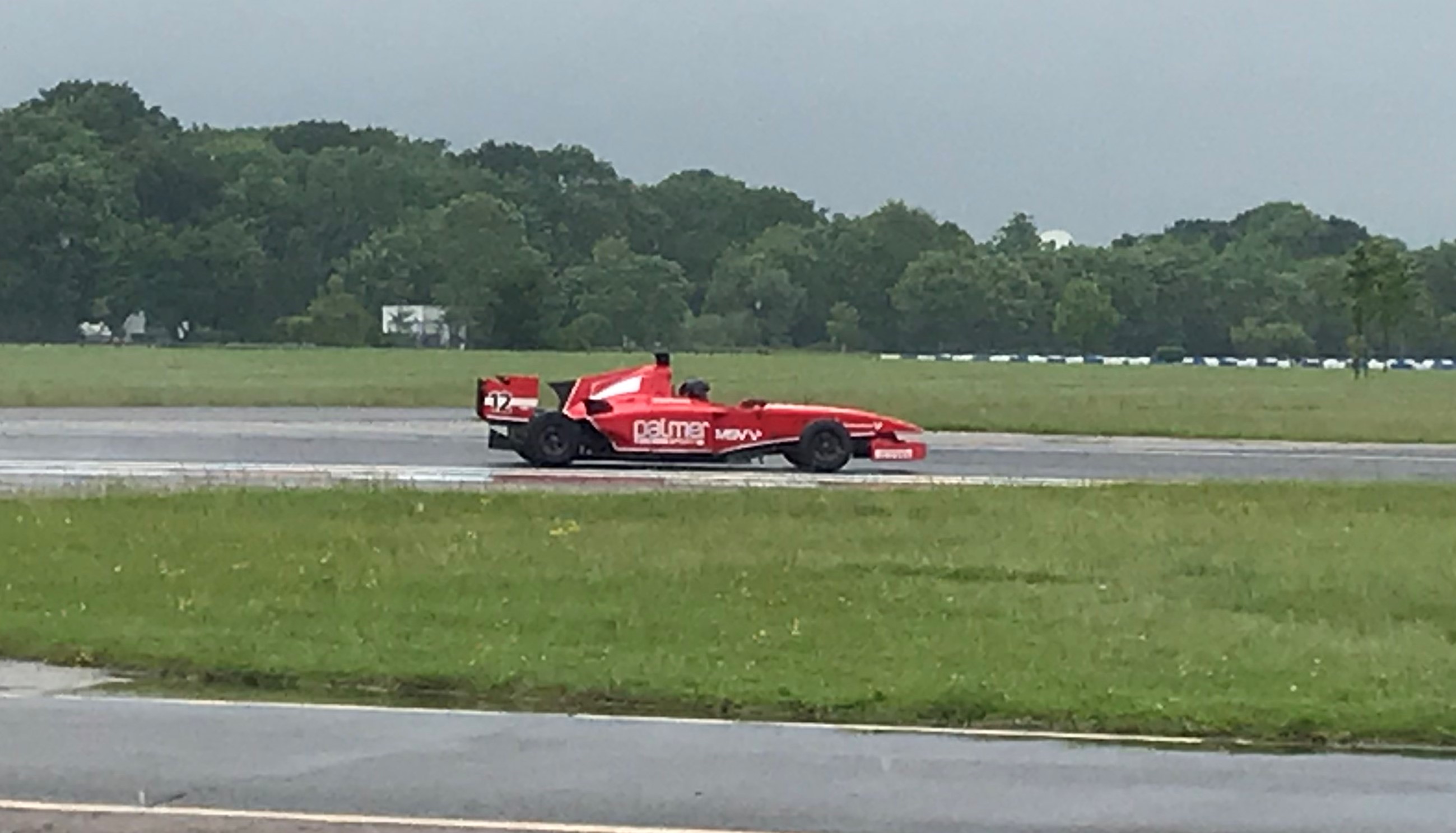
The roar of the F3000’s engine was as sweet as that of any audio system, and the acceleration was massive, like a firm hand steadily pressing you back into your seat. As I mentioned in my Meridian post, I was able to cross off a bucket list item of getting to go aboard an actual Concorde. This, I must confess, was an even greater highlight, as this was an item I didn’t even know you could put on the bucket list. Our entire group left this Autodrome giddy with adrenaline, and spent many an hour discussing our day at the track over a few pints. If you ever find yourself abroad and have the opportunity to visit Palmer Sport (www.PalmerSport.com) I can’t recommend it enough. I dare say it will be one of the most exhilarating experiences of your life.
Next stop on our trip was a high-speed train trip through the Chunnel over to visit to Barco in Belgium, manufacturer of high-performance video projectors. Stay tuned!
